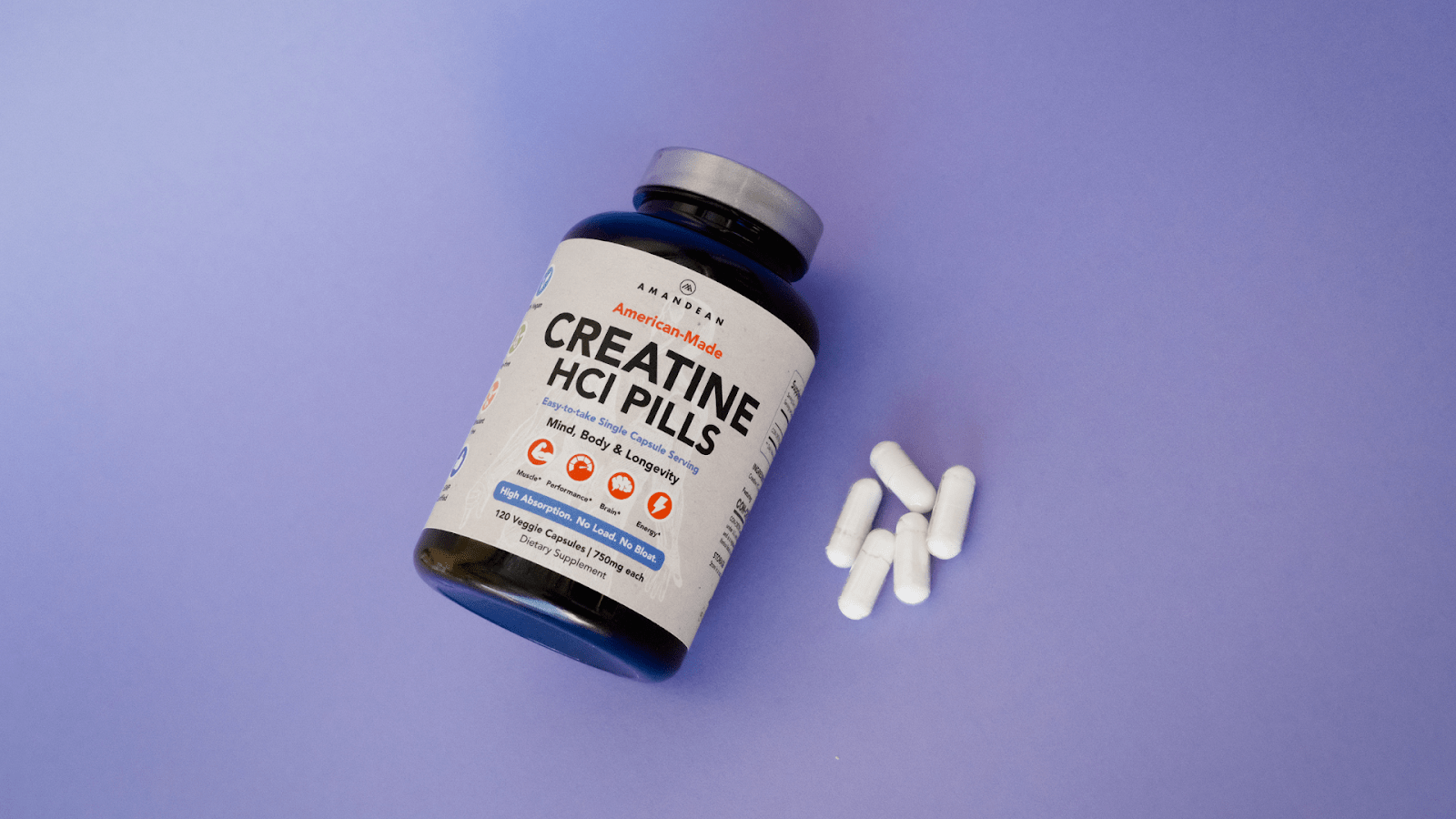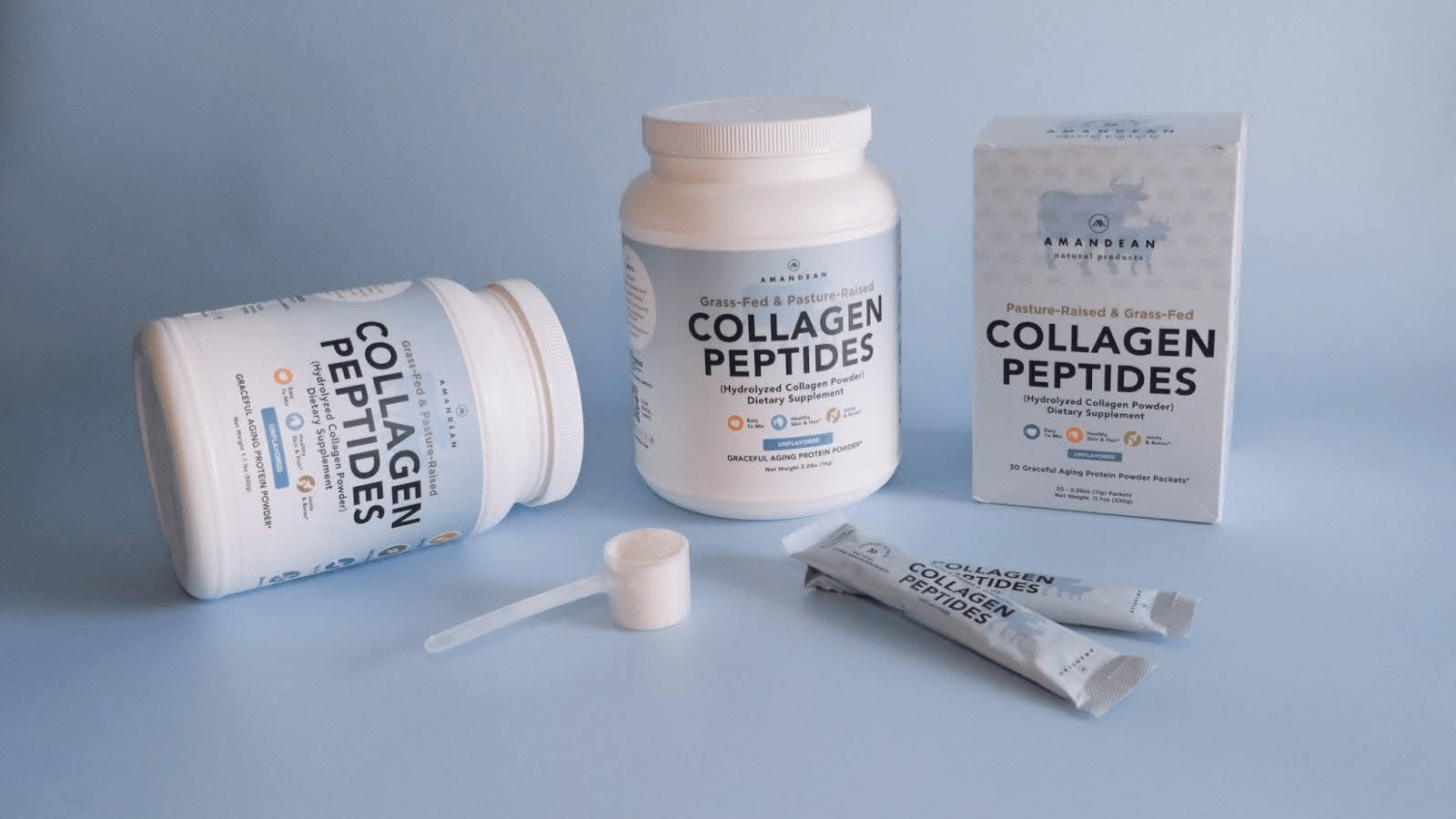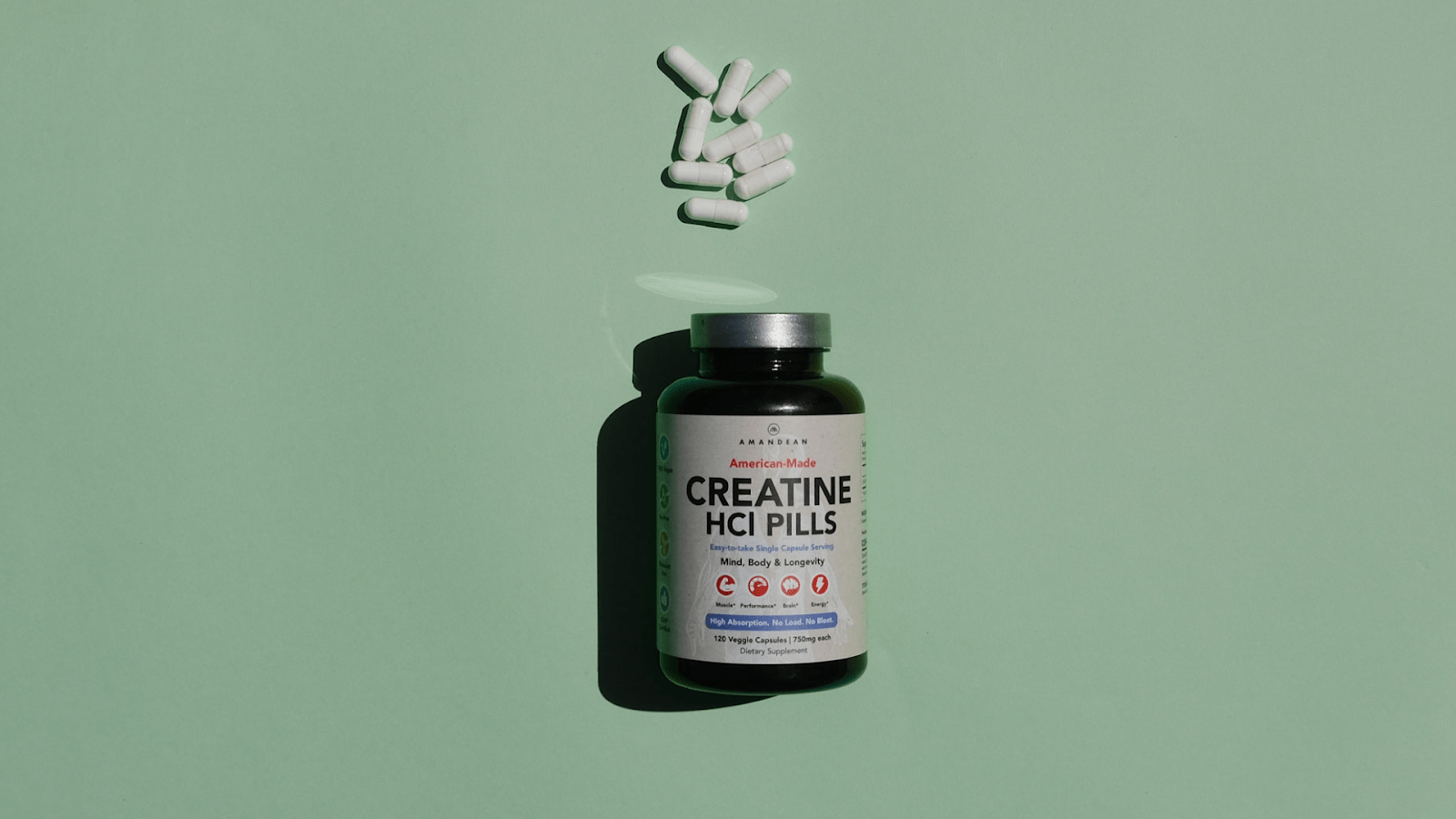Your Cart is Empty

October 09, 2019 10 min read
Take our quiz and find which supplements your body is craving.

When the topic of skincare is brought up, most of us jump to thinking about creams, lotions, serums, oils, and many other cosmetic products that fill our bathrooms. After all, the cosmetics industry feeds them to us on a silver platter as essentials. Are we saying that you should ignore your favorite beauty influencers altogether as they’re shamelessly plugging their must-have skincare products? Absolutely not. There’s plenty of scientific evidence backing up topical solutions that undoubtedly lead to positive skincare results. Nevertheless, it is clear that health, as well as beauty, is formulated on the inside - as nutrient molecules are usually too large to penetrate the skin. So basically, bioavailability matters!
Today, we’re focusing on the importance of omega-3 fatty acidsin your skincare regimen, which have to be obtained through diet given that our body is not able to produce them on its own. Without further ado, let’s find out why we shouldn’t rely solely on expensive face creams and good genes for healthy, plump skin glowing from the inside!
Before we jump into the actual importance of omega-3 acids for skin health, it is of utmost importance to sort through all the noise surrounding these fatty acids by properly introducing them, along with their numerous benefits.
Fatty acids are best defined as long-chain hydrocarbons, which may be classified into four main categories: saturated, monounsaturated, polyunsaturated, and trans fats. While saturated and trans fats have a rather negative connotation in nutritional science, and are also linked to cardiovascular conditions, the other two groups of fatty acids, especially polyunsaturated omega-3 fatty acids, have promising roles in cardiovascular health, as well as many other aspects of healthy aging.
You may be wondering what does the “3” in the name of these fatty acids stand for? The secret is in their structure, as they’re polyunsaturated fatty acids, which means that they entail more than one double bond - as opposed to monounsaturated fatty acids. This bond pertains to a relationship between hydrogen atoms and carbon atoms in the fatty acid. Namely, a fatty acid is considered unsaturated when it’s lacking a pair of hydrogen atoms due to a double bond between two carbon atoms. Omega-3 fatty acids contain this double bond in the third carbon position from the methyl terminal - hence the number in the name. Confused yet? Keep reading, it’ll all become clear :).

In simple terms, omega-3s are essential fatty acids, meaning that the body is unable to manufacture them naturally. Furthermore, over the past few decades, numerous health benefits of long-chain omega-3 polyunsaturated fatty acids in dietary supplement form have been reported, a study by Karsten H. Weylandt et al. finds. According to this study focused on the promising health benefits of omega-3s, their beneficial effects have been noted in different aspects of health, including cardiovascular, neuropsychiatric, neurodegenerative, as well as inflammatory conditions.
When it comes to different types of omega-3s, there are three predominant groups, including alpha-linolenic acid (ALA), eicosapentaenoic acid (EPA), and docosahexaenoic acid (DHA). As far as sources of these fatty acids are concerned, while ALA is found primarily in plant oils (canola, soybean, flaxseed), DHA and EPA are most commonly consumed in what we eat through seafood as well as plant-based marine sources. Truth be told, the body is able to convert a certain amount of ALA into EPA and eventually DHA, but the amount of these nutrients is still considered insufficient for optimum health.
Alpha-linolenic acid (ALA) is, in fact, the most abundant omega-3 acid in the human diet, mainly utilized for energy, unless converted into biologically active forms, EPA and DHA. When it comes to eicosapentaenoic acid (EPA), although it is mainly sourced from seafood, some microalgae have also been found to contain EPA. Finally, docosahexaenoic acid (DHA), just like EPA, is mainly obtained from animal sources. However, it should be noted that quality microalgae supplements also contain a significant amount of this valuable fatty acid, which makes them a favorable alternative for vegetarians and vegans.
Since omega-3 fatty acids play a vital role in cell membrane composition, it is no wonder that they’re also found in the very structure of the skin. According to a study on the healing fats of the skin, omega-3s have shown promising effects when it comes to the management of numerous skin conditions, including acne vulgaris, psoriasis, atopic dermatitis, as well as melanoma. The same study finds that the importance of these acids in skin health is supported by their roles in the maintenance of permeability barrier, the elevation of sunburn threshold, promotion of wound healing, as well as the formation and secretion of lamellar bodies.

As a study on the effect of dietary supplementation with omega-3 fatty acids suggests, omega-3s have been found to limit the synthesis of pro-inflammatory molecules, protecting the skin epidermis, while also playing a significant structural role in skin barrier composition. The same study found that supplementing with omega-3s was very effective in cases of acne vulgaris, as acne inflammation, epidermal hyperplasia, and follicular hyperkeratosis were all significantly reduced.
Psoriasis is yet another widely spread skin condition manifested through painful inflammation and scales, compromising quality of life. In cases of this severe skin condition, omega-3 fatty acids have been shown to prevent skin cell hyperproliferation, which is believed to be one of the main causes of the spreading of psoriasis. 10-weeks of research including participants diagnosed with psoriasis found omega-3 supplementation to decrease the level of psoriasis, as well as inflammation and skin cell proliferation, in 60% of the subjects.
Additionally, another study confirmed positive effects of omega-3s on skin structure in cases of psoriasis, finding that they have been shown to suppress the concentration of pro-inflammatory product, leukotriene B4. However, in order for these beneficial effects to be achieved, higher doses of omega-3s must be obtained (3.6–14 grams daily), hence the requirement of bioavailable omega-3 supplementation.

Dermatitis, an extremely unpleasant skin condition causing dry, itchy skin, can compromise the structure of the skin barrier, leaving the door wide open for bacteria and allergens. Thanks to their anti-inflammatory, skin-barrier-preserving agents, omega-3s have been found to decrease skin dryness in cases of dermatitis, while also improving overall clinical outcome.
Omega-3 fatty acids have also been associated with photoprotection of the skin, preventing UV-induced skin damage. According to a study conducted by Tse-Hung Huang et al., omega-3s contain powerful photoprotective agents, significantly decreasing the proliferation of pro-inflammatory eicosanoids and protecting skin from UV-induced damage.
Accordingly, oral supplementation with omega-3 fatty acids has also been found to aid in the prevention of skin aging which may be sun-induced. Yet another study focused on photoprotective macronutrients emphasized the systematic photoprotective potential of omega-3 fatty acids through numerous mechanisms, proposing the addition of omega-3 supplementation, in addition to topical sunscreen.
Supplementing with omega-3 fatty acids has also yielded some impressive results in cases of skin wound healing, including ulcers, chronic wounds, second-degree burns, and similar skin injuries. Due to their vital structural role in the cell membrane, omega-3 fatty acids have been found to play a significant role in skin tissue reconstruction. Namely, omega-3s promote an inflammatory response in the affected area, supporting the healing process.

Omega-3 fatty acids participate in yet another essential skin-quality-preserving process concerning skin’s main structural component - collagen formation. Collagen is a structural protein accounting for 30% of all protein in the body, crucial to structure and integrity of bones, connective tissues, and of course - skin. When it comes to the role of collagen in skin health, it has been proven to promote elasticity and hydration, as well as prevent skin aging. Furthermore, collagen synthesis is one of the predominant requirements for efficient skin protection in case of photo-oxidation and inflammation, as well as free radical damage.
A study conducted by Hankenson K. D. and colleagues suggests that polyunsaturated fatty acids have been found to enhance collagen synthesis, thus supporting its skin-healing effects, including wound healing. Furthermore, omega-3 fatty acids have been shown to modulate collagen signaling in human platelets, which is a crucial factor in reducing the risk of abnormal blood clotting.
While the definition and the scientific explanation may seem a bit hard to comprehend, there is certainly no confusion when it comes to the numerous benefits of omega-3 fatty acids - and not only for your skin. In case you're interested in omega-3 benefits beyond skincare, here's a breakdown of their most prominent roles in human health.
Regarding brain health and cognitive functions, omega-3s seem to be a crucial factor. According to a study conducted by Guesnet P. and colleagues, omega-3s, especially DHA, play a vital role in relation to membranes of the central nervous system, as they’re necessary for the “optimum development of retina and brain functions”. That being said, the study also confirms that obtaining these fatty acids from adequate dietary sources is a must. What’s more, omega-3 fatty acids have also been found to serve as a lubricant on a cellular level, significantly improving cell communication and flexibility, thus promoting gene expression and cell metabolism.

If you’re expecting a baby, you should make sure that you’re getting enough omega-3s from quality sources, as a study on omega-3 fatty acid supplementation during pregnancy highlights the role of these supplements in this delicate period. Namely, according to the mentioned study, omega-3 fatty acids are necessary as far as fetal neurodevelopment and optimal health of the baby are concerned, especially considering their anti-inflammatory properties. Finally, the study proposes supplementing with algae-based omega-3 acids as one of the most efficient ways to obtain the needed dose.
Scientists also find omega-3 acids vital in cardiovascular health, as getting more EPA and DHA through dietary sources has been shown to significantly lower triglyceride levels. Furthermore, a study by Carl J. Lavie and colleagues states that omega-3 acids have shown great potential when it comes to lowering the chances of the development of certain cardiovascular conditions. In addition, omega-3 fatty acids have also been found to aid in maintaining an optimal heart rhythm, which helps to avoid potentially harmful arrhythmias. These fatty acids may also improve blood vessel function associated with blood pressure levels. In relation to cardiovascular health, omega-3s have also been found to ease inflammation which has been linked to reducing chronic joint pain and tenderness.
Omega-3 polyunsaturated fatty acids should also be on the priority list of athletes, as they’re undergoing a great deal of physiological stress manifested through inflammation, which we’ve already mentioned as one of the conditions omega-3s can decrease. Moreover, a study on benefits and endpoints of omega-3s in sport suggests that these fatty acids may improve recovery, optimize training gains, and aid in high-level competition performance. Additionally, regular consumption of omega-3 fatty acids has also been linked to improvement in individuals diagnosed with osteoarthritis, as these acids have been shown to reduce its symptoms and progression.

DHA, one of the 3 predominant types of omega-3 fatty acids, is also largely present in the retina of the eye, being its main structural component. Therefore, a lack of this essential omega-3 fatty acid may compromise vision. In this sense DHA also helps to reduce long-term vision problems and vision impairment as we age.
In conclusion, omega-3 polyunsaturated fatty acids provide nutrients to keep our bodies and skin healthy as we age, while reducing risks of potentially serious health conditions, especially when it comes to our skin. Omega 3’s have demonstrated great potential as far as maintaining skin homeostasis and managing skin abnormalities are concerned, while also offering benefits for heart, eyes, joints, and our immune systems. Check out our cruelty-free Vegan Omega 3 capsules in our online store today.

October 17, 2025 8 min read
Find out why creatine is better for vegans! Boost your wellness game and unlock peak performance with Amandean's premium supplements today.

October 16, 2025 7 min read
Learn whether collagen in coffee is just another wellness fad. Examine the facts, benefits, and how to use collagen in coffee for beauty and joint support.

September 22, 2025 9 min read
Unlock the full benefits of creatine for women. Boost energy, beauty, and brainpower with Amandean’s clean formulas.